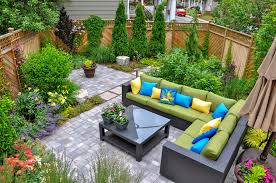How to Start a Sustainable Garden in Your Backyard

Starting a sustainable garden in your backyard is a rewarding way to grow your own food, beautify your space, and contribute to a healthier planet. A sustainable garden goes beyond aesthetics—it focuses on eco-friendly practices that conserve resources, support biodiversity, and minimize waste. Whether you’re a beginner or an experienced gardener, this guide will walk you through the steps to create a sustainable garden that thrives.
Why Choose a Sustainable Garden?
Sustainable gardening reduces your environmental footprint by prioritizing practices that protect the ecosystem. By growing your own fruits, vegetables, and plants, you can reduce reliance on store-bought produce, which often requires transportation and packaging. Additionally, a sustainable garden fosters healthier soil, attracts pollinators, and promotes a harmonious relationship with nature.
Step 1: Plan Your Garden
The first step in creating a sustainable garden is thoughtful planning. Consider the following:
- Purpose: Decide what you want to grow—vegetables, fruits, herbs, flowers, or a combination.
- Space: Assess the size of your backyard and determine how much area you can dedicate to the garden.
- Sunlight: Observe your yard to identify spots with adequate sunlight, as most plants need at least 6 hours of direct sunlight daily.
- Climate: Research your local climate and grow plants suited to your region’s conditions. Native plants are often the most sustainable choice.
Step 2: Choose Eco-Friendly Gardening Materials
Sustainable gardening starts with selecting materials that are environmentally friendly and durable:
- Use recycled containers or repurpose items like old buckets, crates, or wood for planters and raised beds.
- Invest in biodegradable materials, such as compostable plant pots or mulch.
- Opt for manual tools instead of gas-powered equipment to reduce your carbon footprint.
Step 3: Build Healthy Soil
Healthy soil is the foundation of a thriving garden. Sustainable practices focus on enriching the soil without synthetic chemicals.
- Compost: Start a compost pile with kitchen scraps, yard waste, and organic matter. Compost improves soil structure, retains moisture, and provides nutrients.
- Natural Fertilizers: Use organic fertilizers like manure, bone meal, or fish emulsion instead of synthetic products.
- Crop Rotation: Rotate crops annually to prevent soil depletion and reduce pests and diseases.
Step 4: Conserve Water Wisely
Water is a precious resource, and sustainable gardening emphasizes efficient usage.
- Rainwater Harvesting: Install a rain barrel to collect water from your roof for irrigation.
- Drip Irrigation: Use a drip irrigation system or soaker hoses to deliver water directly to plant roots, reducing waste.
- Mulching: Cover the soil with organic mulch (like straw, wood chips, or leaves) to retain moisture, reduce evaporation, and suppress weeds.
Step 5: Select the Right Plants
Choosing the right plants is critical for sustainability.
- Native Plants: Select native species that are well-adapted to your local climate and require less water and maintenance.
- Companion Planting: Pair plants that benefit each other. For example, marigolds repel pests and can be planted alongside vegetables.
- Perennials: Incorporate perennials like berries or herbs that grow back each year, reducing the need for replanting.
Step 6: Attract Beneficial Wildlife
A sustainable garden thrives when it supports biodiversity. Attract pollinators and other helpful wildlife:
- Plant flowers rich in nectar to attract bees, butterflies, and hummingbirds.
- Build a birdhouse or provide a water source for birds to control pests naturally.
- Avoid chemical pesticides and instead use organic solutions like neem oil or introduce natural predators like ladybugs.
Step 7: Minimize Waste
Reducing waste is a cornerstone of sustainability.
- Compost Organic Waste: Turn kitchen scraps and yard waste into nutrient-rich compost.
- Reuse Materials: Repurpose items for garden beds, trellises, or fencing.
- Avoid Single-Use Plastics: Use durable tools and biodegradable plant containers instead of disposable plastics.
Step 8: Practice Organic Pest Control
Avoid harmful pesticides and opt for eco-friendly methods to manage pests:
- Handpicking: Remove pests like caterpillars or beetles by hand.
- Natural Sprays: Use homemade sprays made from garlic, chili, or soap to deter insects.
- Beneficial Insects: Introduce insects like praying mantises or ladybugs that feed on pests.
Step 9: Rotate and Diversify Crops
Crop rotation prevents soil depletion and reduces the risk of disease. Diversify your garden with a mix of plants to maintain soil health and attract a variety of beneficial organisms.
Step 10: Maintain Your Garden
Regular maintenance is essential for sustainability.
- Weed Regularly: Pull weeds manually to prevent them from competing for nutrients.
- Prune Plants: Trim overgrown branches to promote healthy growth and airflow.
- Monitor Soil Health: Test your soil periodically and amend it as needed with compost or organic matter.
Benefits of a Sustainable Garden
- Environmental Impact: Reduces carbon footprint, conserves water, and supports local ecosystems.
- Cost Savings: Growing your own produce reduces grocery bills over time.
- Healthier Lifestyle: Provides access to fresh, organic fruits and vegetables.
- Biodiversity: Creates a habitat for pollinators, birds, and beneficial insects.
Conclusion
Starting a sustainable garden in your backyard is a fulfilling journey that benefits both you and the planet. By adopting eco-friendly practices, conserving resources, and nurturing biodiversity, you can create a thriving, self-sufficient garden that stands the test of time. Whether your goal is to grow your own food, beautify your space, or contribute to environmental conservation, a sustainable garden is a step toward a greener future.
So roll up your sleeves, gather your tools, and start transforming your backyard into a sustainable oasis today!



